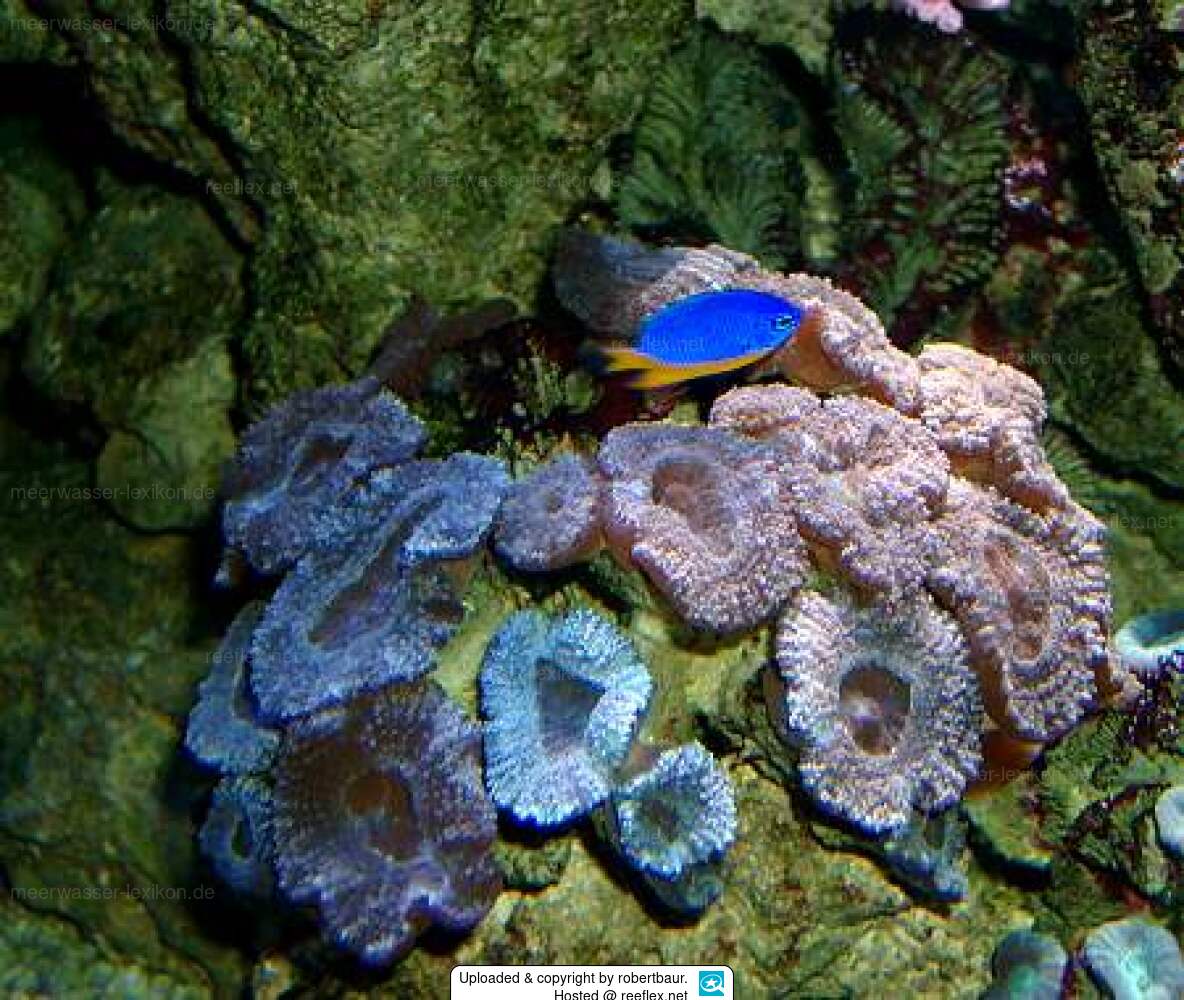Info
Lobophyllia themselves usually do not nettle very vigorously, so that e.g. tube corals still grow in the direct vicinity and can even crowd them.
The lighting is to be seen somewhat differentiated, and can be depending upon animal medium or also strong(differentiated particularly also because of some intra-species deep water corals). It is therefore best to settle in the middle light range for the time being. Upwards or downwards you can still put them!
The current should, as with many LPS corals, not be too strong or in any case direct, otherwise the septa can cut or damage the tissue.
There are many aquarists who swear by supplemental feeding for this animal, although it should be noted that other aquarists have also had negative experiences with feeding. Too small food is slimed in, large food is often not held properly. One must test out, which kind of food can be utilized well.
Note from the keeper: This coral nettles quite strongly! Therefore keep distance to other corals.
Color: Blue-grey, sometimes with pale valley floors or septo-costae. All corallites of the same colony have the same colour.
Similar Species: Lobophyllia hemprichii, which has smaller, less fleshy polyps. Lobophyllia flabelliformis has corallites of similar size and fleshy appearance, but these are always flabello-meandroid.
Systematik: Biota > Animalia (Kingdom) > Cnidaria (Phylum) > Anthozoa (Class) > Hexacorallia (Subclass) > Scleractinia (Order) > Lobophylliidae (Family) > Lobophyllia (Genus) >
The lighting is to be seen somewhat differentiated, and can be depending upon animal medium or also strong(differentiated particularly also because of some intra-species deep water corals). It is therefore best to settle in the middle light range for the time being. Upwards or downwards you can still put them!
The current should, as with many LPS corals, not be too strong or in any case direct, otherwise the septa can cut or damage the tissue.
There are many aquarists who swear by supplemental feeding for this animal, although it should be noted that other aquarists have also had negative experiences with feeding. Too small food is slimed in, large food is often not held properly. One must test out, which kind of food can be utilized well.
Note from the keeper: This coral nettles quite strongly! Therefore keep distance to other corals.
Color: Blue-grey, sometimes with pale valley floors or septo-costae. All corallites of the same colony have the same colour.
Similar Species: Lobophyllia hemprichii, which has smaller, less fleshy polyps. Lobophyllia flabelliformis has corallites of similar size and fleshy appearance, but these are always flabello-meandroid.
Systematik: Biota > Animalia (Kingdom) > Cnidaria (Phylum) > Anthozoa (Class) > Hexacorallia (Subclass) > Scleractinia (Order) > Lobophylliidae (Family) > Lobophyllia (Genus) >







 robertbaur
robertbaur



















